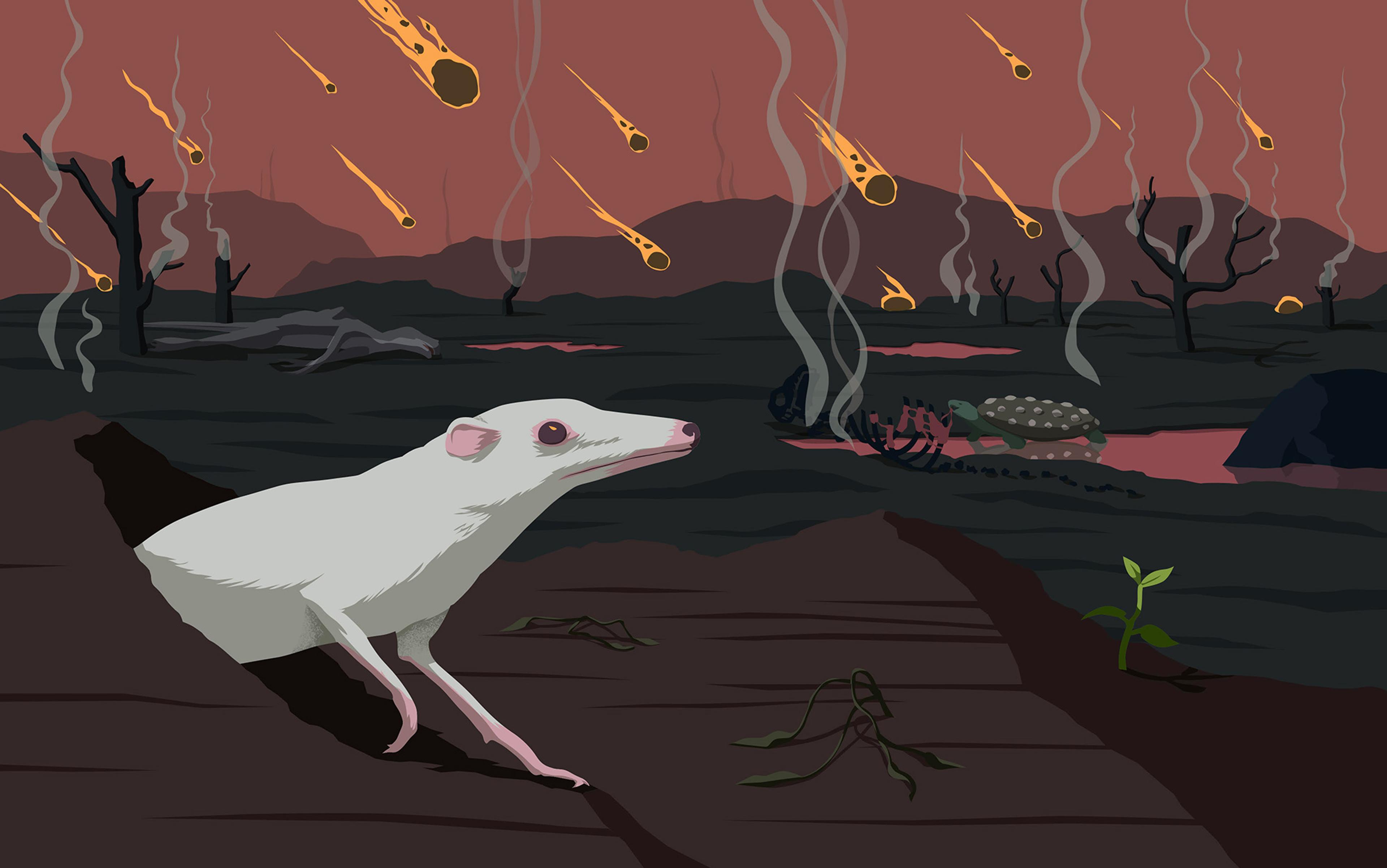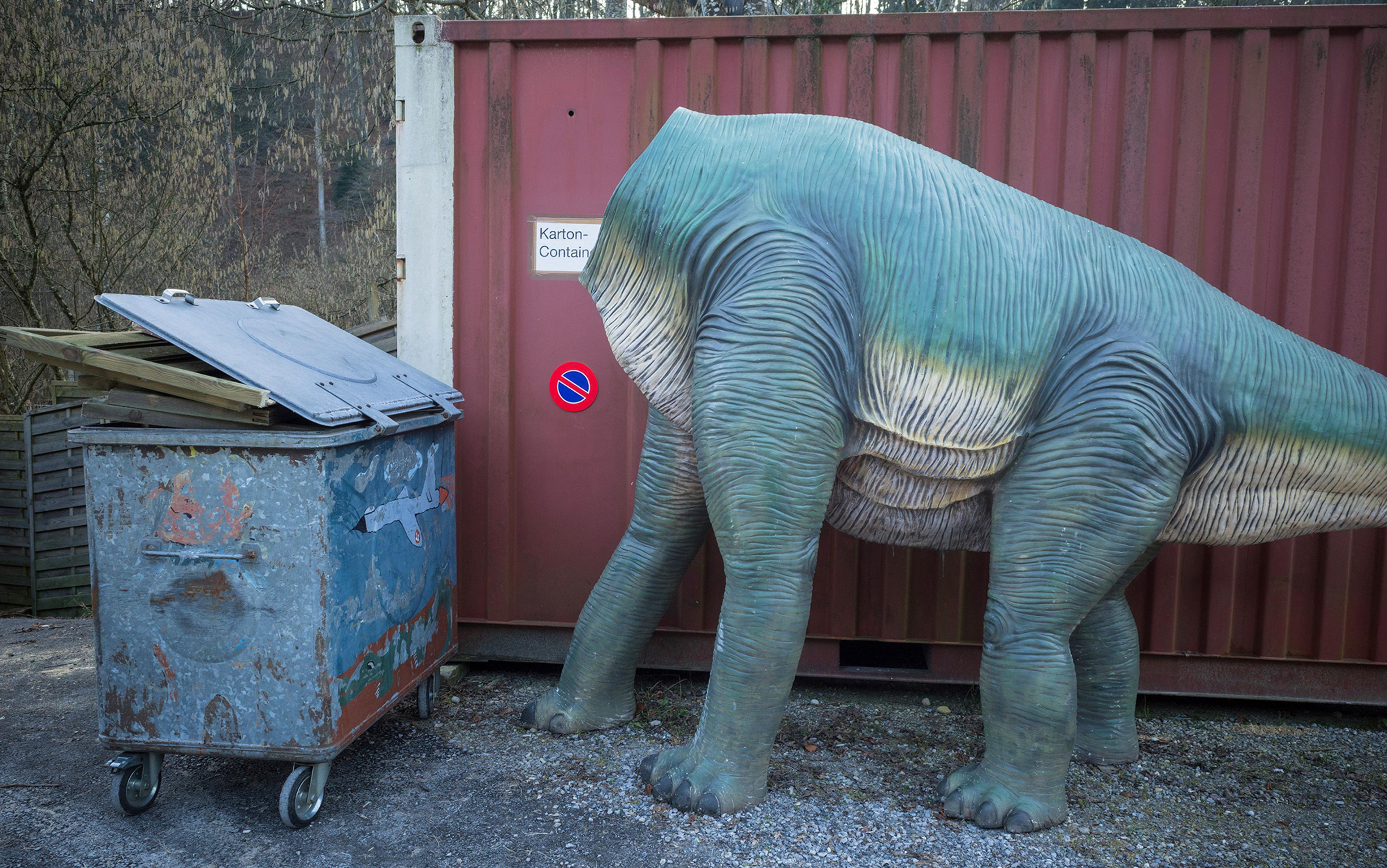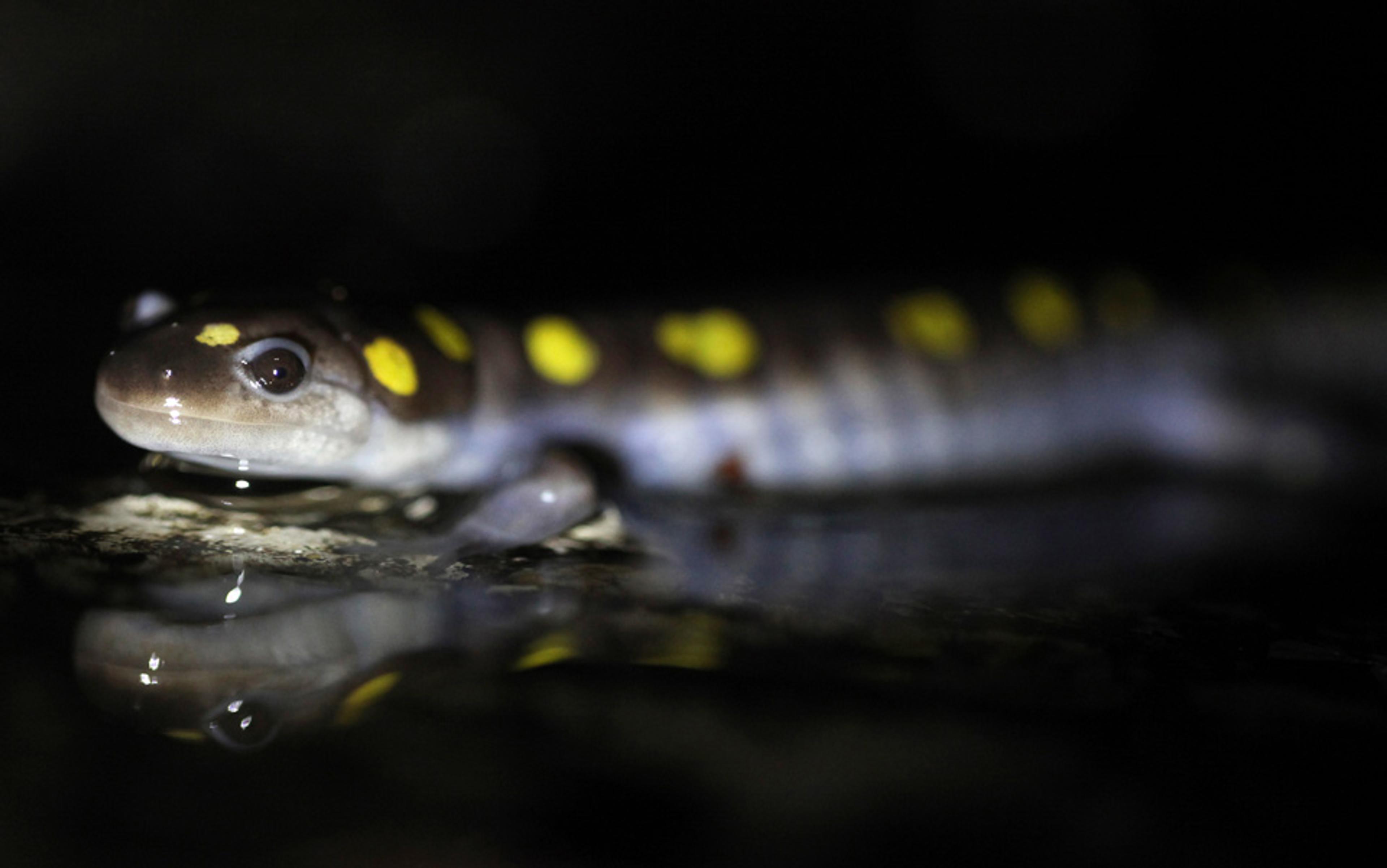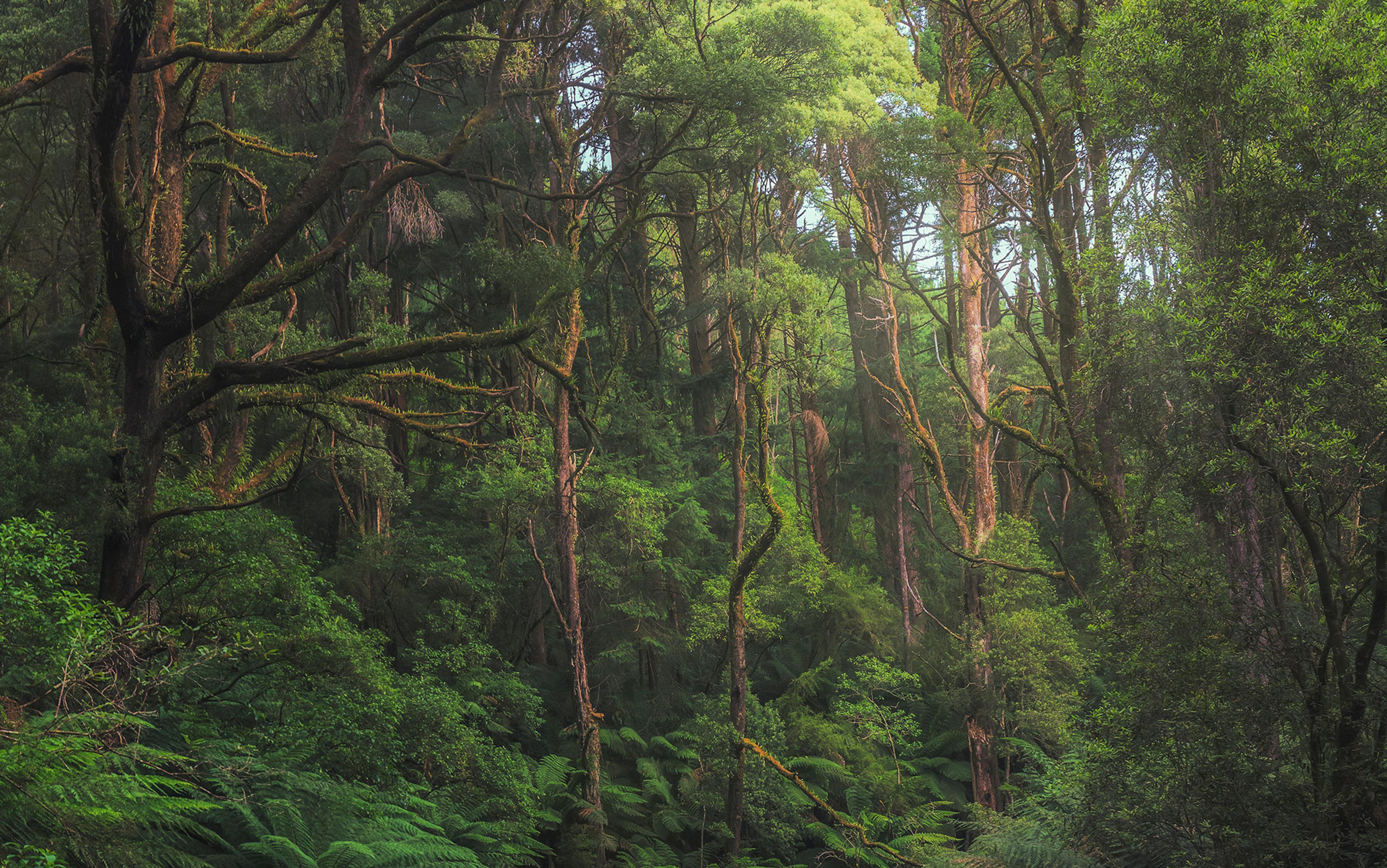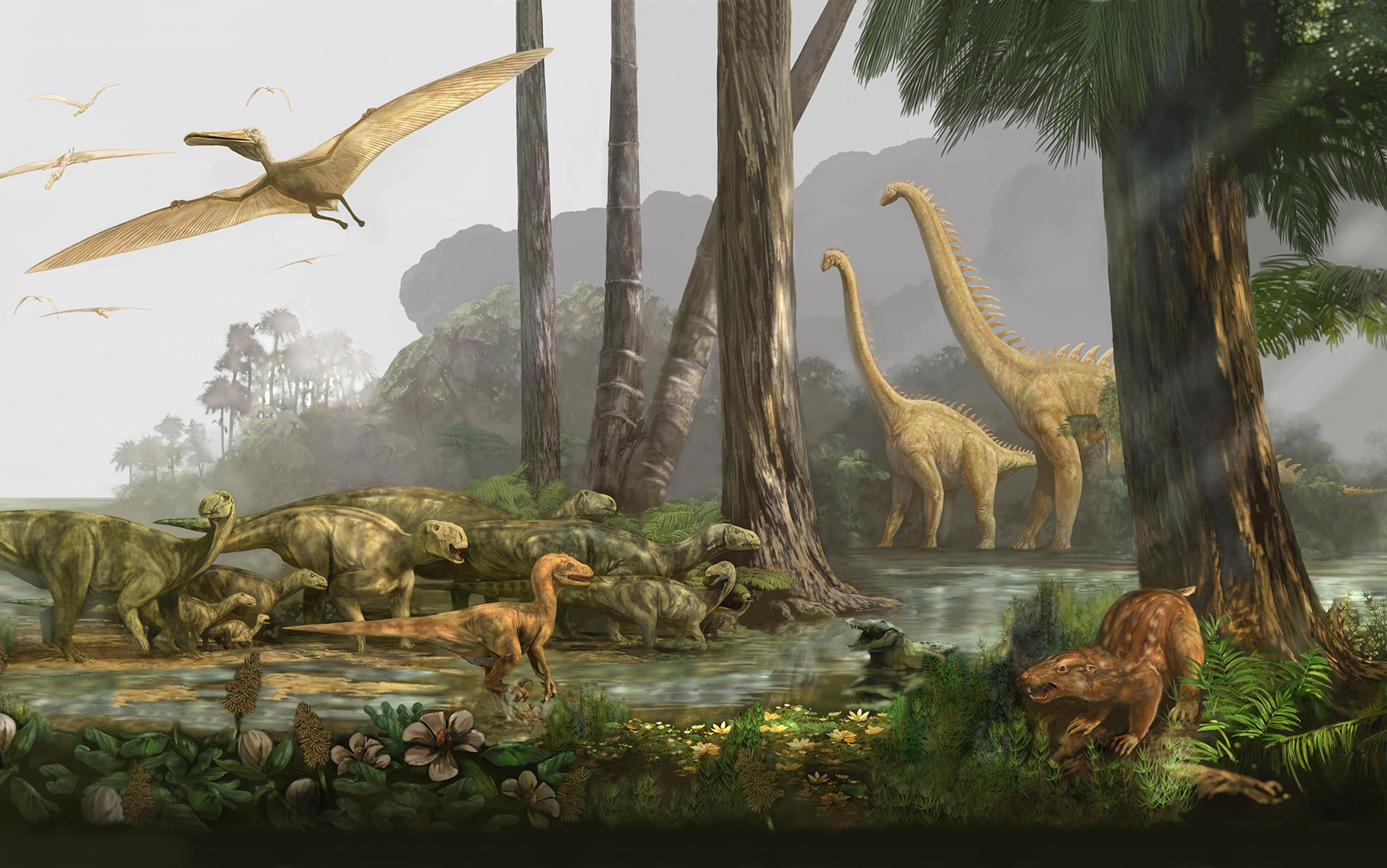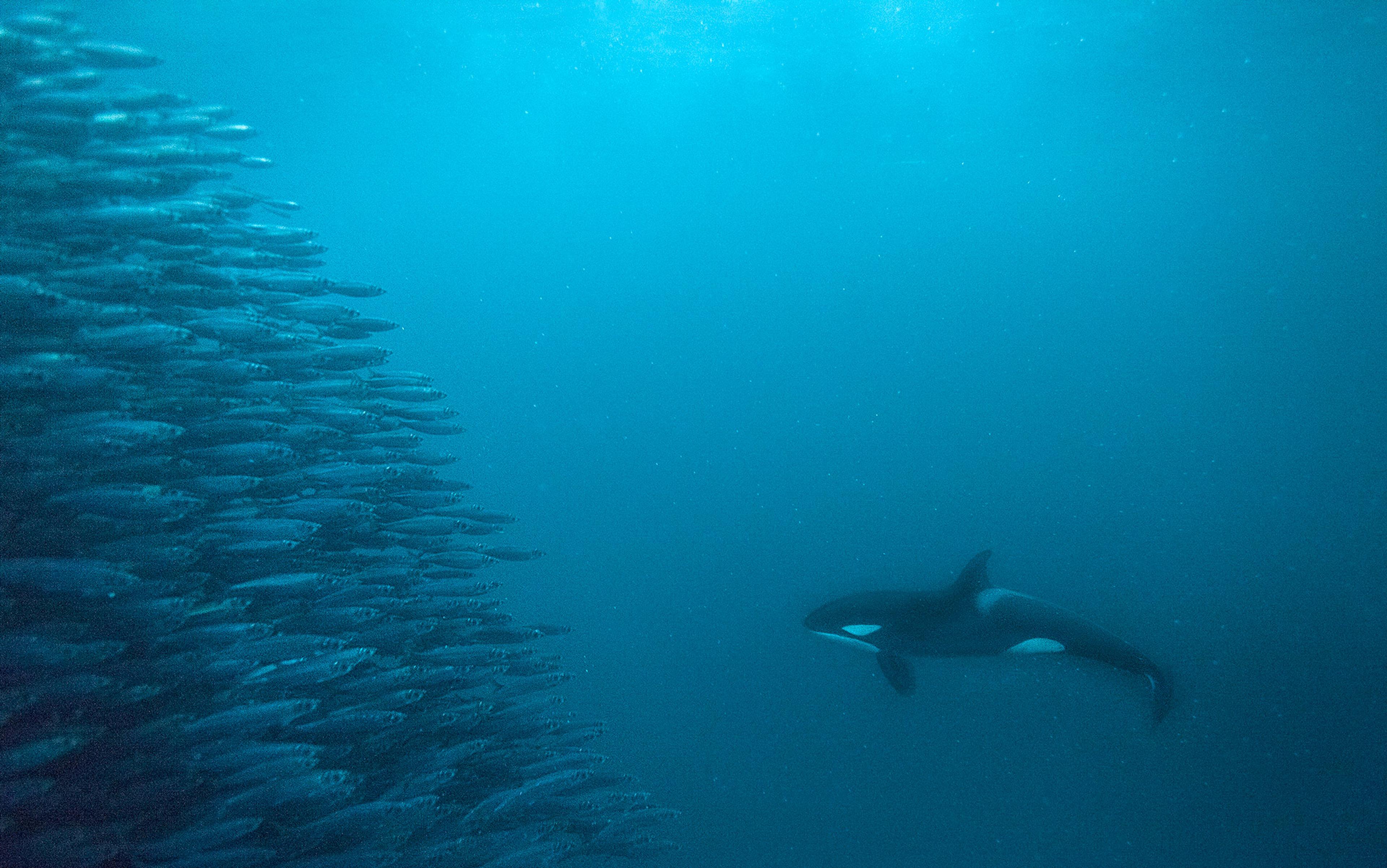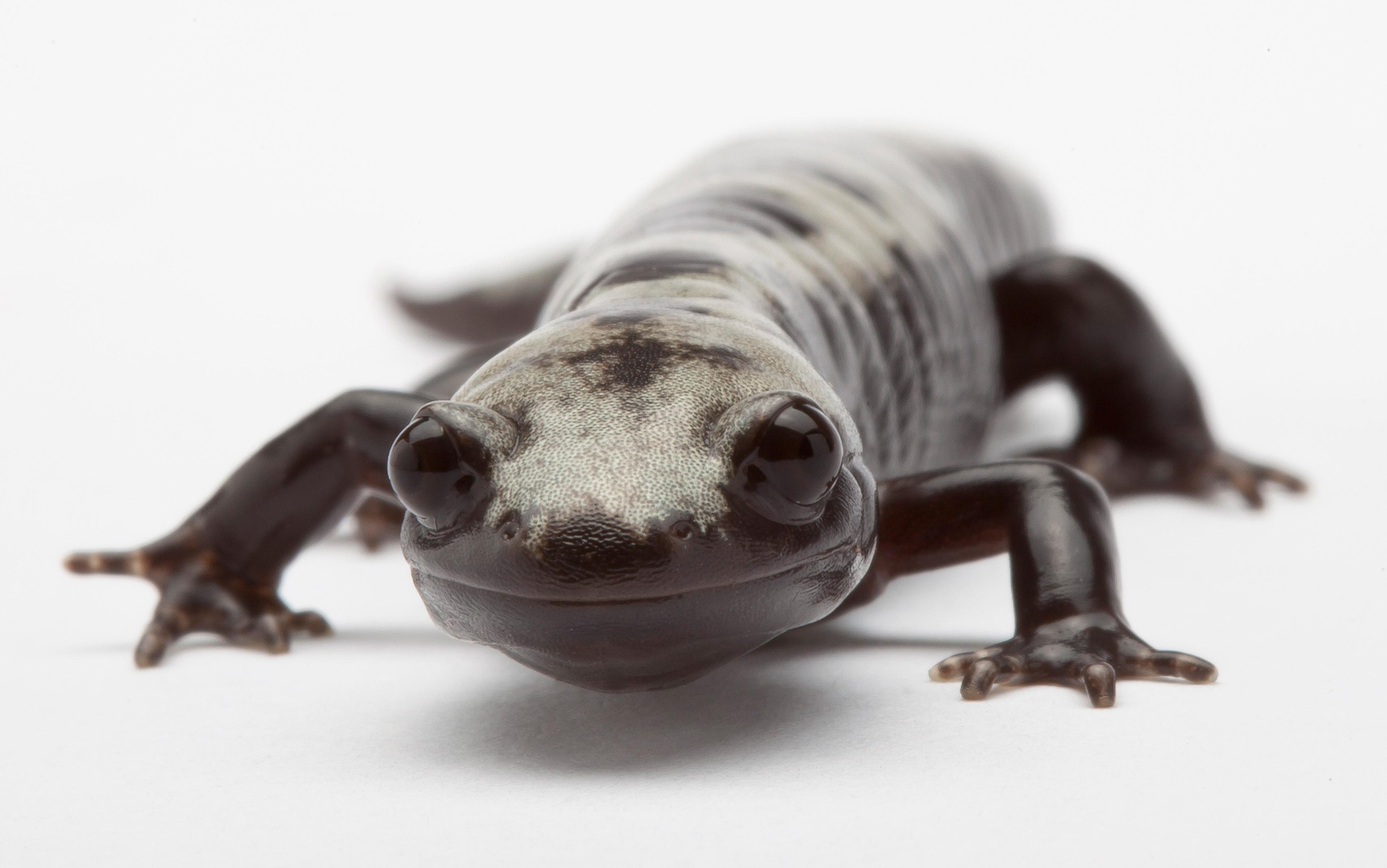In certain places around the world – in the Badlands near Drumheller in Alberta, Canada, in the Geulhemmergroeve tunnels in the Netherlands, or in the Hell Creek formation in eastern Montana – you can touch a thin line of rock, and know you are touching the most famous mass extinction event on Earth. This Cretaceous-Paleogene (K-Pg) boundary layer is a seam of clay found all over the world, enriched with iridium – an element that appears on the Earth’s surface only when something from outer space crashes there. It represents a fleeting geological moment, separating the epoch of the dinosaurs from the world we know without them.
While dinosaurs get most of the attention, they weren’t the only ones to disappear. More than half of all life on Earth – from plankton to pterosaurs – perished following the impact of the Chicxulub asteroid that created a 150 km-wide crater in the Yucatán peninsula. It took 30,000 years for life to re-emerge in the fossil record, and another 4 to 9 million years to return to pre-impact levels.
What happened in those first 30,000 years? Some animals were still around even if their numbers weren’t great enough to be fossilised – otherwise we wouldn’t be here today. But what was it like to be a survivor in the aftermath of the catastrophic event?
It probably helped to be a creature that lived underground, given the asteroid impact shot 10 trillion tons of rock and other debris high into the atmosphere. As this debris fell back to Earth, the entire globe was bombarded with superheated projectiles. For those that survived the intense heat of this onslaught, the weather forecast for the next several months would be acid rain, dark skies and below-freezing temperatures as a layer of fine atmospheric particulates and a cloud of sulphuric acid covered the world.
Survivors of the impact – such as the small, rat-like Procerberus – would eventually have crawled out of hiding into the ultimate postapocalyptic environment. Massive fires started by the superheated bullets were still raging. Rotting carcasses and charred remains of those caught on the surface – billions of unfortunate plants and animals – littered every corner. Reliable sources of clean water would have dried up or been contaminated by rock, dust or acid rain.
Survival required ingenuity and flexibility. Normal sources of food were gone, the temperature had plummeted, members of families and social groups were dead or dispersed. Such conditions might force a typically tree-dwelling species, such as our tiny insectivorous ancestor, to find shelter in caves. Or they might have forced an omnivorous, mostly plant-eating species, such as the freshwater Neurankylus turtle, to become a dinosaur-meat scavenger. The only silver lining would have been the total annihilation of all the large predators – the relatively tiny survivors could forage for charred scraps in peace.
The resilient few not only survived, but also eventually reproduced – which must have required even more flexibility. Given the shortage of options, survivors couldn’t afford to be too picky in their choice of mates. In fact, mating between different species was probably common in the aftermath. About the same time as the K-Pg extinction event, there is genomic evidence of increased hybridisation between plant species.
This postapocalyptic period was characterised by novelty. New genetic combinations resulting from crossbreeding would have added to an array of anomalies caused by developing in a stressful environment. The first generation of the new world order wouldn’t copy the habits that had enabled their lineages’ survival for aeons; instead, they would copy habits their parents had improvised out of the necessity of the moment. Emerging from the ashes, the biotic world looked nothing like the one before the asteroid struck. It would take millions of years for pre-impact levels of species diversity to rebound and for ecosystems to stabilise.
When things did settle back down, the pace of evolution would return to a virtual standstill. That’s the pattern we observe in the fossil record: disruption, change and then long periods of stasis. However, it took many years for scientists to accept this pattern. It contradicted the Darwinian paradigm, where evolution should occur through slow and gradual changes. Under the Darwinian view, the diversity of life can be explained by simply adding up many, many small inherited changes over a long period of time. Such gradualism was believed to be a necessary part of adaptation by natural selection – the process by which some variants of traits are lost each generation, because their bearers leave no offspring.
The evolution of something new, such as eyes or feathers, requires a heck of a long waiting time
But this persistent focus on natural selection as the sole mechanism of adaptive evolution has always been a sticking point. It can’t properly explain how anything new arises. After all, natural selection is a process that eliminates unfit variants – it doesn’t create, but changes the prevalence of what’s already there. Instead, novelty must come from the purely random process of genetic mutation. The problem is that when new mutations appear, they’re usually not a good thing. They are more likely to disrupt well-adapted systems than to improve them, especially if they have a big effect. The upshot is that the evolution of something new, such as eyes or feathers, requires a heck of a long waiting time. Not only is there a long wait for a beneficial mutation to come along, but then there’s the long process of accumulating enough of them to build up, step by step, a complex new structure.
Fortunately for the Darwinian paradigm, geological time gives evolution millions and billions of years to work with. Yet in the 1970s, the American palaeontologists Stephen Jay Gould and Niles Eldredge proposed that the pattern of stasis and disruption might be something more than just imperfections in the fossil record. This punctuated equilibrium, as they called it, might reflect the uneven way that evolution actually unfolds. If Gould and Eldridge were right, then natural selection on random mutation suddenly had a much shorter timescale in which to accomplish major evolutionary changes. Because of this, punctuated equilibrium was initially met with scepticism.
However, there’s been a growing acceptance of this pattern among evolutionary biologists and theorists over the years, as new studies and techniques reveal it again and again across diverse organisms. For example, Stevan J Arnold, an evolutionary biologist at Oregon State University, and his colleagues looked at patterns of body size evolution in vertebrates using three different types of data that span vastly different timescales: long-term field and museum studies that compare changes over tens to thousands of years, fossil measurements that assess changes over 100,000 to around a million years, and comparative data that can detect divergence among species (estimated using genetic data) over a period of tens of millions of years. They found that bursts of body-size evolution occur only on the order of every million years or so.
Body size might actually be one of the least constrained traits. Gene Hunt, an evolutionary biologist at the Smithsonian National Museum of Natural History in Washington, DC, compared body shape and size from more than 250 fossil lineages to assess whether evolution followed one of three modes: directional change, a random walk (meandering change but in no consistent direction), or stasis. In only 5 per cent of cases was there evidence of the type of slow and steady directional change that Charles Darwin envisioned. The other 95 per cent of taxa were split between the latter two modes with body size more often going on random walks and body shape more often staying the same over millions of years.
The pervasiveness of this pattern means that modern-day evolutionary biologists now have two enigmas to explain. First, what prevents species from changing for the majority of their existence? And second, when they do change, how does it happen so fast?
The most frequently invoked mechanism to explain the first of these patterns is known as stabilising selection – a form of natural selection that keeps traits from changing by eliminating extreme variants. It’s the Goldilocks of selection, retaining variants that are ‘just right’. Not too fast and not too slow, not too large and not too small. But stabilising selection makes sense only if species inhabit an environment that isn’t changing. This puts it at odds with the ubiquity of large-scale environmental change throughout Earth’s history, in the form of climate cycles, sea level changes and alterations to the geomagnetic field. Besides, often we do see microevolutionary changes – the small-scale changes that occur within species – across much shorter timespans. This suggests that stabilising selection is not ever-present.
Over the past several decades, evolutionary biologists have documented countless examples of rapid evolutionary changes in a wide variety of traits. These are heritable changes that occur over just a few years or decades, in everything from algae to moths to salmon. We also know that artificial selection in the lab produces even faster changes. In fact, one of the most consistent patterns is that rates of evolution over short periods of time are much higher than those over long periods of time.
There might be universal principles for how stability is maintained – even at the level of entire species
One interpretation is that evolution follows a weak zigzag pattern, with little net directionality. In other words, when we zoom out to a macroevolutionary timescale – the extremely long-term level at which we see novel traits or new groups of organisms emerge – rapid changes appear as nothing more than random noise. At moderate scales, perhaps glacial cycles or other gradual environmental changes push populations back and forth around a mean, but over very long timescales, there is little net evolutionary change.
Examples of such dynamic stability, where a system shows fluctuations around a mean but little net change over time, are everywhere. We see this pattern in human-engineered systems, such as the minute altitude dips and corrections of an airplane using autopilot control. We see it in brain waves, or in ecological systems where the number of individuals in a population or species in a community fluctuates across years, but overall remains steady.
There’s a remarkable similarity between patterns of dynamic stability observed in evolution on the one hand, and diverse human-engineered and natural systems on the other. This suggests that there might be universal principles for how stability is maintained – even at the level of entire species. If so, taking a systems approach to evolutionary dynamics could drastically alter how we view evolution as a process. First and foremost, it makes it clear that explaining how species stay the same is just as important as explaining how they change. It also suggests that the mechanisms underlying both might be inextricably linked.
Every time you use cruise control on your car or set the thermostat in your house, you are using a system that’s engineered to maintain some output in a steady state. Human-engineered systems that maintain steady states are designed to be robust in the face of changing environmental conditions. Robust systems are stable, not because all components stay unchanged in the face of variable inputs – they don’t – but because the function or output of the system remains stable. To achieve this steadiness, the lower level components of a system must be in constant action – modifying their behaviour and interactions in response to environmental changes.
Because of these feats of human engineering, we already know a lot about the mechanisms that confer robustness in complex systems. Feedback control, an old concept in engineering design, is one of the most important. A familiar example is a gas furnace controlled by a thermostat. We set the thermostat for a desired temperature and this becomes the system’s reference point. If the sensor in the thermostat measures a lower temperature than the reference point, the gas valve of the furnace opens and lights the fire box. The house will get warmer until the room temperature exceeds the thermostat reference setting by a small amount. The furnace will then turn off and the room temperature will start to fall. When it falls a small amount below the set point, the thermostat will send a signal to open the gas valve again and the cycle will repeat. The central idea is that a system’s output can be measured by a sensor, fed back to a controller of some kind, and so used to effect control via a comparison with the reference point.
We routinely invoke this type of feedback control to understand how organisms maintain their physiology in a balanced way – what biologists call a homeostatic state. For example, to keep our body temperature steady, neurons connected to the skin send information to the brain about current skin temperature. This information is then used to change our physiological responses: if the skin temperature is too cold, we begin to shiver; if it’s too hot, we begin to sweat. The ‘sensors’ in this case are placed at the surface of our skin because it’s important to detect changes in temperature and respond before core body temperature changes. There are also temperature-sensitive neurons in the brain – but because the goal of the organism is to maintain a stable brain temperature, these neurons are not expected to be actively involved in sensing changes in core body temperature. So what is their purpose? One hypothesis is that they provide information about the baseline core temperature, which can be compared with information from the skin, and so enable the organism to respond before there is any real danger. Such anticipatory responses, also called feedforward control, are crucial to stability – without them, core body temperature would be regulated but would fluctuate wildly.
This is just one of many examples in biological systems where we observe both feedback and feedforward controls. The ability of organisms to maintain temperature, water, salt and glucose balance are all examples of core physiological functions that remain relatively stable in the face of extensive environmental variability. But the question remains whether we can apply these concepts to the problem of evolutionary stasis. And if so, how would homeostatic mechanisms at higher biological scales even work?
Ecologists have dealt with and deployed the concept of homeostasis for decades. They use it to understand how stability is maintained in overall productivity, energy balance and biomass of ecosystems, though it’s rarely been invoked to explain evolutionary patterns. Yet populations can be thought of as complex systems, with their output being a steady number of offspring produced each generation. While there are no overall sensors, comparators or controllers in these ecological systems, we still often observe feedback control. When the density of a population becomes too high, further population growth is checked because each individual within the population has more difficulty finding adequate food, or because high population density increases predation or parasitism. All of these factors can lead to lower survival and reproduction, reducing or reversing population growth.
But wholesale decreases in survival and reproduction are the crudest of possible corrections to high population density. They are analogous to an organism postponing shivering until the neurons in the brain register a dip in brain temperature – by that time, hypothermia will already have set in. And because most populations don’t go through dramatic booms and busts, there must be other, less extreme mechanisms of population regulation. This suggests that there are not only feedback, but also feedforward mechanisms in ecological systems.
Organisms often also preempt trouble by shaping the environment to their needs
Individual organisms often respond to cues of environmental challenge by changing their behaviour or by influencing the traits of their offspring. For example, in my own work on birds, mothers in crowded populations put more testosterone in their eggs and produce aggressive offspring. Because they are good competitors, these offspring can leave overpopulated areas to find new habitat elsewhere. In contrast, mothers breeding in newly colonised habitat with a low density of breeders produce more mild-mannered offspring that are more likely to remain and acquire a territory nearby. By breeding next to their parents, these cooperative offspring are buffered from competition and from the costs of moving to a new area. But producing less aggressive offspring works only when there is lots of extra space for families to divide up. This example shows how mothers can influence offspring traits in a way that prepares their kids to deal with the environmental challenges they are most likely to face.
If fewer offspring remain when density is high, and more stay when it’s low, this can dampen fluctuations in population size. Such anticipatory responses are ubiquitous across taxa and aren’t limited to the influence of mothers on their kids. For example, Daphnia, a tiny aquatic crustacean, can develop spines on their bodies or helmets on their heads (depending on the species) as protection from predators. But they don’t have to wait for an actual encounter with a predator: simply detecting the chemical signature of the predator in the water is enough for them to armour up.
Such strategies enable populations to avoid natural selection even in the face of constant environmental change – and so might help to explain patterns of evolutionary stasis. In other words, stasis does not occur because the environment is unchanging, but because organisms are constantly responding to cues of environmental changes.
Perhaps even more important, organisms not only react quickly to cues of trouble: they often also preempt trouble in the first place by actively shaping the environment to their needs. Humans are masters at this, and construct houses, roadways and farms to control exposure to abiotic stressors, eliminate predators and competitors and sequester resources. But while the scale of what humans do is extreme, all organisms modify their environment to some extent – from beavers who build elaborate dams to create ponds to forage in, to bacteria that form a slimy sheath of biofilm to share nutrients and avoid harmful elements in the environment.
In fact, the ability of organisms to shape the environment to their needs is so effective that they’re largely buffered against common types of environmental challenges. But such extreme buffering comes with costs. Robust systems have their limits, and can be vulnerable when the system experiences environmental variation outside the normal range. One illustration of this is the breakdown of Caribbean coral reef systems in the 1980s. Before their unexpected collapse, these systems were considered highly resilient, able to readily reassemble following common disturbances such as hurricanes. Pristine reefs had multiple types of algal foragers, which kept large algal blooms at bay. But by the mid-1950s, overfishing meant that this role in the ecosystem was performed almost exclusively by sea urchins. Because of the lack of competition with fish, their numbers swelled. Such overabundance set the stage for a massive disease outbreak among the sea urchins – which in turn meant that algal blooms went unchecked, and ultimately led to the collapse of entire coral reef ecosystems. This example illustrates that, over evolutionary time, the system had evolved resilience to the most common type of disturbance – hurricanes – but had become vulnerable to human-induced changes that eliminated multiple layers of algal foragers. This redundancy, a common requirement for robust systems, had made the system vulnerable to algal blooms – because, before overfishing, it likely had never experienced that particular challenge.
It’s striking to note that the million-year wait Arnold and colleagues observed for evolutionary changes in body size corresponds roughly to the lifespan of most species. One implication is that evolutionary changes that are persistent enough to appear in the fossil record might occur only with a major, usually catastrophic event that pushes entire communities out of their equilibrium.
Such events are rare and occur only every million years or more – but when they do, the system must either change or cease to function. In evolutionary terms, that means it must evolve or go extinct. This suggests that macroevolutionary patterns can’t be understood by simply adding up microevolutionary changes over a long period of time because catastrophic events, such as the Chicxulub meteor, don’t occur on a constant gradual basis. In fact, all the evidence suggests that major evolutionary changes can occur in a blink of a geological eye and persist only when systems suffer a major disruption and are forced to massively reorganise.
We are now in a time that some have called the sixth mass extinction. From the melting of polar ice caps to microplastics contaminating the deepest sea vent, human modifications of the environment have disrupted ecosystems across the globe. There’s debate about whether the current rate of species extinctions rise to the level of prior mass extinctions, but regardless of the answer, it’s unclear whether the organisms alive today can respond flexibly to these changes. Some take comfort in the fact that, in Earth’s history, global climate cycles have occurred on a regular basis. The fossil record tells us that, instead of going extinct or evolving, most species and communities simply moved and tracked their climate zone northward or southward.
Natural selection, rather than being a slow shaper of species, is most evident in brief bursts of change
However, current climate change is different. Not only because warming is occurring faster than ever before, but also because it’s occurring in the context of an already battered system. In isolation, climate change mightn’t be that big of a deal – organisms might be able to adjust. But in the context of ecosystems that have already suffered from pollution, invasive species and habitat degradation, many regions might already be at a tipping point for which climate change is the last straw.
Evolutionary biologists have documented countless examples of rapid evolutionary change in the past few decades. Most of these are in species that are experiencing some sort of extreme environmental disturbance, such as invaders that have been released into a novel habitat or plants that rapidly adapt to the toxic soil of mine tailings. All of these examples show us that substantial evolutionary change can happen rapidly. They suggest that natural selection, rather than being a slow and gradual shaper of species, is most evident in brief bursts of change following major disruption.
When the Chicxulub meteor hit Earth 66 million years ago, billions of organisms perished, and the survivors were forced to flexibly respond and form novel systems of interactions that were ‘good enough’ to survive. During this reorganisation, natural selection no doubt sorted rapidly between traits and strategies that functioned and those that did not. But where did novelty come from?
A slow wait for the right set of mutations to come along isn’t an option during a catastrophic event. Instead, the flexible responses of individual organisms probably produced an abundance of novel variation, on which selection could act. These flexible responses would have ranged from innovative behavioural strategies, to new associations between various organisms, to novel phenotypes produced from developmental stress or hybridisation. If they were capable of being inherited, these new variants would have provided the basis for rapid evolutionary changes that eventually led to a new stable state. The result was groups of species, traits and interactions completely distinct from those that reigned during the era of the dinosaurs.
The pattern of evolutionary stasis dominates the history of life on Earth. Yet, too often, we’re more focused on explaining change instead of understanding how things stay the same. The irony here is that the key to both of these problems might be the same. A better understanding of how populations remain stable – the feedbacks and feedforwards, the built-in flexibility and responsiveness of the system, the redundancies and mechanisms of resiliency – might enable us not only to better understand evolutionary stasis, but also allow us to predict how organisms change when their stable state is disrupted.
Most importantly, viewing evolution through a systems lens fundamentally changes how we view the story of life on Earth. It’s not a story of the constant struggle for existence. Rather, it’s a story that resides in the pauses – the uneventful interludes, where components of the systems maintain the status quo, and change necessarily comes with painful and extreme disruption.
This Essay was made possible through the support of a grant to Aeon from the John Templeton Foundation. The opinions expressed in this publication are those of the author and do not necessarily reflect the views of the Foundation. Funders to Aeon Magazine are not involved in editorial decision-making.
